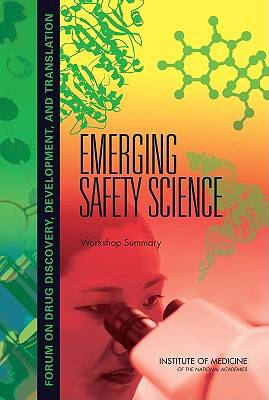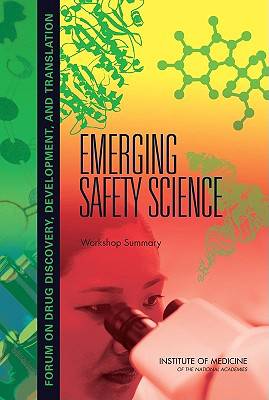
- Retrait gratuit dans votre magasin Club
- 7.000.000 titres dans notre catalogue
- Payer en toute sécurité
- Toujours un magasin près de chez vous
- Retrait gratuit dans votre magasin Club
- 7.000.0000 titres dans notre catalogue
- Payer en toute sécurité
- Toujours un magasin près de chez vous
Emerging Safety Science
Workshop Summary
Institute of Medicine, Board on Health Sciences Policy, Forum on Drug Discovery Development and Translation, Robert Giffin, Robert Pool, Sally RobinsonDescription
In recent years, the costs of new drug development have skyrocketed. The average cost of developing a new approved drug is now estimated to be $1.3 billion (DiMasi and Grabowski, 2007). At the same time, each year fewer new molecular entities (NMEs) are approved. DiMasi and Grabowski report that only 21.5 percent of the candidate drugs that enter phase I clinical testing actually make it to market. In 2007, just 17 novel drugs and 2 novel biologics were approved. In addition to the slowing rate of drug development and approval, recent years have seen a number of drugs withdrawn from the market for safety reasons. According to the Government Accountability Office (GAO), 10 drugs were withdrawn because of safety concerns between 2000 and March 2006 (GAO, 2006). Finding ways to select successful drug candidates earlier in development could save millions or even billions of dollars, reduce the costs of drugs on the market, and increase the number of new drugs with improved safety profiles that are available to patients.
Emerging scientific knowledge and technologies hold the potential to enhance correct decision making for the advancement of candidate drugs. Identification of safety problems is a key reason that new drug development is stalled. Traditional methods for assessing a drug's safety prior to approval are limited in their ability to detect rare safety problems. Prior to receiving U.S. Food and Drug Administration (FDA) approval, a drug will have been tested in hundreds to thousands of patients. Generally, drugs cannot confidently be linked to safety problems until they have been tested in tens of thousands to hundreds of thousands of people. With current methods, it is unlikely that rare safety problems will be identified prior to approval. Emerging Safety Science: Workshop Summary summarizes the events and presentations of the workshop.Spécifications
Parties prenantes
- Auteur(s) :
- Editeur:
Contenu
- Nombre de pages :
- 150
- Langue:
- Anglais
Caractéristiques
- EAN:
- 9780309110129
- Date de parution :
- 08-05-08
- Format:
- Livre broché
- Format numérique:
- Trade paperback (VS)
- Dimensions :
- 152 mm x 226 mm
- Poids :
- 272 g

Les avis
Nous publions uniquement les avis qui respectent les conditions requises. Consultez nos conditions pour les avis.






